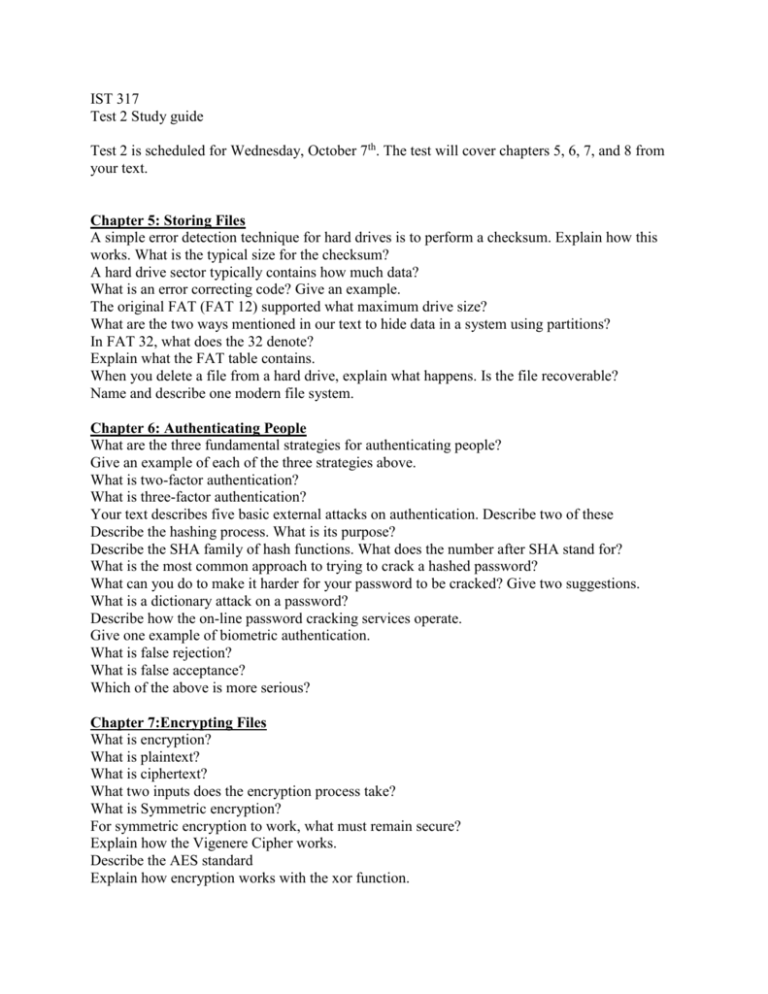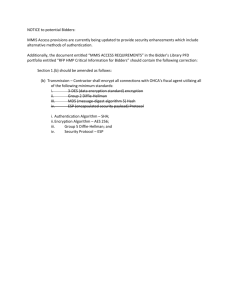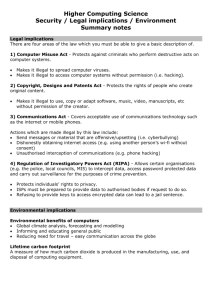IST 317 Test 2 Study Guide: File Storage, Authentication, Encryption
advertisement

IST 317 Test 2 Study guide Test 2 is scheduled for Wednesday, October 7th. The test will cover chapters 5, 6, 7, and 8 from your text. Chapter 5: Storing Files A simple error detection technique for hard drives is to perform a checksum. Explain how this works. What is the typical size for the checksum? A hard drive sector typically contains how much data? What is an error correcting code? Give an example. The original FAT (FAT 12) supported what maximum drive size? What are the two ways mentioned in our text to hide data in a system using partitions? In FAT 32, what does the 32 denote? Explain what the FAT table contains. When you delete a file from a hard drive, explain what happens. Is the file recoverable? Name and describe one modern file system. Chapter 6: Authenticating People What are the three fundamental strategies for authenticating people? Give an example of each of the three strategies above. What is two-factor authentication? What is three-factor authentication? Your text describes five basic external attacks on authentication. Describe two of these Describe the hashing process. What is its purpose? Describe the SHA family of hash functions. What does the number after SHA stand for? What is the most common approach to trying to crack a hashed password? What can you do to make it harder for your password to be cracked? Give two suggestions. What is a dictionary attack on a password? Describe how the on-line password cracking services operate. Give one example of biometric authentication. What is false rejection? What is false acceptance? Which of the above is more serious? Chapter 7:Encrypting Files What is encryption? What is plaintext? What is ciphertext? What two inputs does the encryption process take? What is Symmetric encryption? For symmetric encryption to work, what must remain secure? Explain how the Vigenere Cipher works. Describe the AES standard Explain how encryption works with the xor function. Chapter 8: Secret and Public Keys What group is referred to as cryptonet? What does the term “rekeying” refer to? Why is it a mistake to encrypt data using a reused key stream? Give an example of this with xor operation. So it is not good to use the same key over and over again. But humans are not good at changing the key. So how do we guarantee a new internal key every time we encrypt a file? P.327. What is “key wrapping”? What is “public-key cryptography”? With public-key encryption, if Bob wants to send a file to Alice, what key does Bob use to generate the ciphertext? Give a difference between secret key and public key encryption. Give an example of an asymmetric encryption system. Most public key encryption systems get their strength from what fact? Explain.











